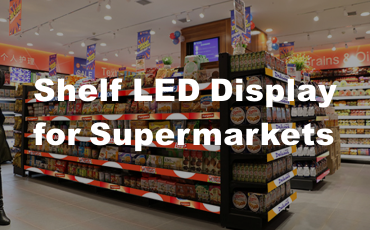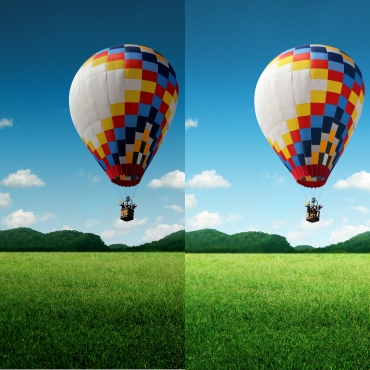LED display screen is a display device that uses light-emitting diodes (LED) as a display carrier. It is composed of small LED module panels and is used to display text, images, videos and other information. LED, light emitting diode (abbreviation of light emitting diode).
It controls the display mode of semiconductor light-emitting diodes. Diodes made of compounds of gallium (Ga), arsenic (As), phosphorus (P), nitrogen (N), and indium (In) can react when electrons and holes recombine.
It radiates visible light and can be used to make light-emitting diodes. Used as indicator lights in circuits and instruments, or formed into text or digital displays.
Gallium arsenide phosphorus diodes emit red light, gallium phosphide diodes emit green light, silicon carbide diodes emit yellow light, and indium gallium nitrogen diodes emit blue light.
In the LED display screen, the display screen made by putting red and green LED chips or lamp tubes together as one pixel is called a three-color or dual-color screen. The light-emitting diodes have three colors: red, green, and blue.
Because of its characteristics of small size, light weight, long life, high luminous brightness, and low interference to ambient light, it has been widely used.
1. Composition structure
1.1 Display unit board: used to display text, patterns and other content;
1.2 Driver unit board: used to drive the LED display to turn on and off;
1.3 Communication unit board: used to transmit signals and receive signals;
1.4 Control software: used to receive communication signals, manage display content, and perform various control processes;
1.5 Other auxiliary equipment: such as fans, power supplies, monitoring systems, etc.
2. Drive circuit
The driving circuit of the LED display screen mainly includes the lighting and turning off of the LED. The circuits for turning on and off LEDs are generally implemented by microcontrollers. Each LED has an independent control terminal, which we call a “light”.
When the “light” is on, the microcontroller controls the on and off of its power supply to make it light up. In order to drive multiple “lights”, there are generally multiple power supplies.
3. Control method
The control method refers to the method used to control the LED display display, which is divided into manual control and automatic control.
3.1 Manual control
When the display content needs to be changed, each LED on the LED screen needs to be lit, and each point must be connected to the computer with a wire. Since the luminous intensity of the LED is adjustable, manual control can achieve better display effects.
3.2 Automatic control
That is, using a computer to control the display content. It is a computer that selects content to display based on predefined rules. Data can be stored according to actual needs, or data stored in the computer can be directly read.
The computer selects the display content according to predetermined rules and converts it into a format that the LED display can recognize, and then connects the display and the computer through a connecting cable.
4. Display principle
The working principle of the LED display is designed based on the characteristics of the light-emitting diode. By adjusting the working state of the control circuit and changing the brightness of the LED, various display information such as text, patterns, and images can be realized.
Its working process is: when the LED light-emitting diode is in normal working condition, its current is very small and the light emission is very weak.
When the current reaches a certain value, it will automatically light up and emit bright light. In most cases, there is only one lighting component on the LED display board. The light it emits appears white or yellow spatially, but appears red vertically.
When a light-emitting diode is forward biased, its luminous intensity increases and appears red due to the increase in current and decrease in voltage.
5. Classification of LED screens
5.1 According to the use environment, it is divided into indoor, outdoor and semi-outdoor
The indoor screen area generally ranges from less than 1 square meter to more than ten square meters. Indoor LED displays are used in indoor environments.
This type of display screen has moderate brightness, large viewing angle, close color mixing distance, light weight and high density, and is suitable for viewing at a closer distance.
The area of outdoor screens generally ranges from a few square meters to dozens or even hundreds of square meters, the dot density is relatively sparse (mostly 2500-10000 dots per square meter), and the luminous brightness is 5500-8500cd/square meter (different orientations, different brightness requirements), and can be used in sunlight.
It can be used under direct sunlight and the viewing distance is tens of meters away. The screen has good windproof, rainproof and lightning protection capabilities.
The semi-outdoor screen is between outdoor and indoor. It has high luminous brightness and can be used outdoors without direct sunlight. The screen body has a certain seal, usually under the eaves or in the window.
5.2 According to color, it is divided into single color, double primary color and three primary color (full color)
Monochrome means that the display screen has only one color of luminescent material, mostly single red. Yellow-green can also be used in some special occasions (such as funeral homes).
The dual-color LED display is composed of red and green LED lights. The 256-level dual-color display can display 65,536 colors (the dual-color screen can display 3 colors: red, green, and yellow). The full-color LED display consists of red, green and blue LED lights and can display white balance and 16,777,216 colors.
5.3 Divide into synchronous and asynchronous according to control or usage method
The synchronization method means that the LED display screen works basically the same as a computer monitor. It maps the computer image point by point corresponding to the image on the monitor at an update rate of at least 30 fields/second, usually with multi-grayscale color display.
Ability to achieve multimedia advertising effects. The asynchronous method means that the LED screen has the ability to store and automatically play. Text and grayscale pictures edited on the PC are transmitted to the LED screen through the serial port or other network interfaces, and then the LED screen automatically plays them offline.
Generally, there is no grayscale content. It has high display capabilities, mainly used to display text information, and can be connected to multiple screens.
6. Product advantages
The LED display screen has the advantages of being waterproof, dustproof, and oil-proof. It has a long service life, no consumables, and can be used repeatedly.
It can display different images at different locations and distances according to customer requirements, making it an all-weather advertising media. Due to its above-mentioned advantages, LED display screens have been widely used.





